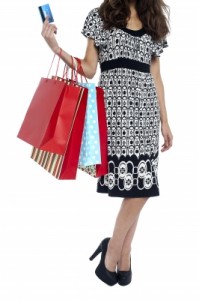If you can get a grant to pay for the research, then just about any topic is ripe for scientific analysis. Once the province of poets and playwrights, happiness is now emerging as a significant field of academic inquiry.
Psychologists, ethicists, scientists and researchers all over the world have been working diligently to dig up hard data on a question philosophers have been pondering for years: What exactly is it that makes us happy?
There are lots of books on the subject–with sexy titles like, Happiness: Unlocking the Mysteries of Psychological Wealth, The How of Happiness: A Scientific Approach to Getting the Life You Want, Happier: Learn the Secrets to Daily Joy and Lasting Fulfillment, and Thanks! How the New Science of Gratitude Can Make You Happier–but I decided that buying and reading all those books wouldn’t actually make me happier.
Instead I read an article in “Yes” Magazine by someone named Jen Angel (Is that a perfect name or what?) who read the books, thereby demonstrating the first of my scientific rules for happiness (hereafter known as Leslie’s Science of Happiness Rule #1)–You’ll be happier if you let someone else do the heavy lifting.
Here are some other scientifically proven strategies for finding happiness, according to “Yes.”
Savor Everyday Moments
This is pretty good advice and I do try to follow it. For example, tonight after we lit the Hanukah candles and my son swung his new Rugby Shirt around the room as though it were the Howler Monkey he was secretly hoping to unwrap, and he barely missed knocking over my wine glass onto a pile of clean white laundry I had yet to fold and he didn’t set anything on fire when he knocked over the menorah, I paused, took a sip of wine and a deep breath and simply savored the moment.
Leslie’s Science of Happiness Rule #2–Hold onto your wine glass, it’s going to be a bumpy ride.
Avoid Comparisons
It’s tough to avoid comparing yourself to other people, and trying to keep up with the Joneses in a wealthy town like Santa Barbara is downright impossible. The scientist’s advice: “instead of comparing ourselves to others, focusing on our own personal achievement leads to greater satisfaction.” This makes sense, but I’ve found that being married to someone with a huge ego is another way to do this. My husband’s delusions of grandeur almost never fail to make me smile, or at least feel better about myself by comparison.
Leslie’s Science of Happiness Rule #3–Marry someone who makes you laugh.
Put Money Low on the List
People who put money high on their priority list are more at risk for depression, anxiety, and low self-esteem, according to research. Obviously I would never have gone into journalism if money were high on my list. Although I can’t say that NOT having much money has ever made me particularly happy, NOT selling my soul for a paycheck certainly has made me happy in my professional life
Leslie’s Science of Happiness Rule #4–Get a job you like.
Have Meaningful Goals
“As humans, we require a sense of meaning to thrive. People who strive for something significant, whether it’s learning a new craft or raising moral children, are far happier than those who don’t have strong dreams or aspirations,” say researchers Ed Diener and Robert Biswas-Diener. This is why I put “keep Koss alive,” “sleep,” “eat chocolate,” and “breathe” at the top of my to do list every day–not only does checking them off make me happy, it also gives me a sense of satisfaction and accomplishment of my goals each and every day of my life.
Leslie’s Science of Happiness Rule #5–Sleep, eat chocolate, breathe, and try to keep your kid alive.
Make Friends, Treasure Family
Happier people tend to have good families, friends, and supportive relationships, say Diener and Biswas-Deiner. But we don’t just need relationships; we need close ones that involve understanding and caring. It’s science, baby.
Leslie’s Science of Happiness Rule #6–Besides wine, chocolate and a husband that makes you laugh, the secrets to happiness are having family in town to baby sit for nights out with your friends.
Smile Even When You Don’t Feel Like It
A wise friend of mine once told me to “smile like you mean it until you actually do mean it.” Oddly enough, she was right. I’ve found that smiling works wonders. It’s really hard to be mad when you smile and it’s really hard for someone else to be mad at you when you smile at them.
Leslie’s Science of Happiness Rule #7–Keep smiling and don’t forget to floss and check for lipstick on your teeth. (And by the way, if I have lipstick on my teeth, would you please tell me.)
Say Thank You Like You Mean It
People who keep gratitude journals on a weekly basis are healthier, more optimistic, and more likely to make progress toward achieving personal goals, according to Robert Emmons. And people who write “gratitude letters” to someone who made a difference in their lives score higher on happiness, and lower on depression–and the effect lasts for weeks, according to Martin Seligman.
Leslie’s Science of Happiness Rule #8–I couldn’t have said this one better myself. Thank you for reading my columns week in and week out. Have a wonderful New Year.





